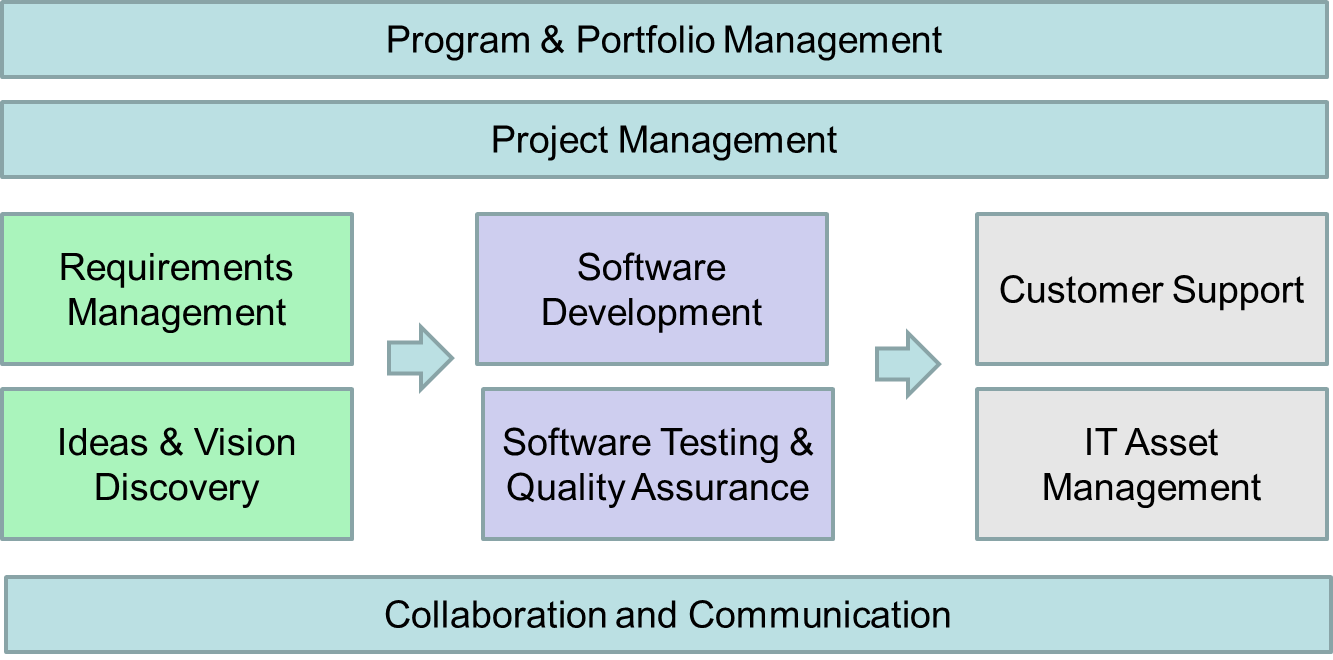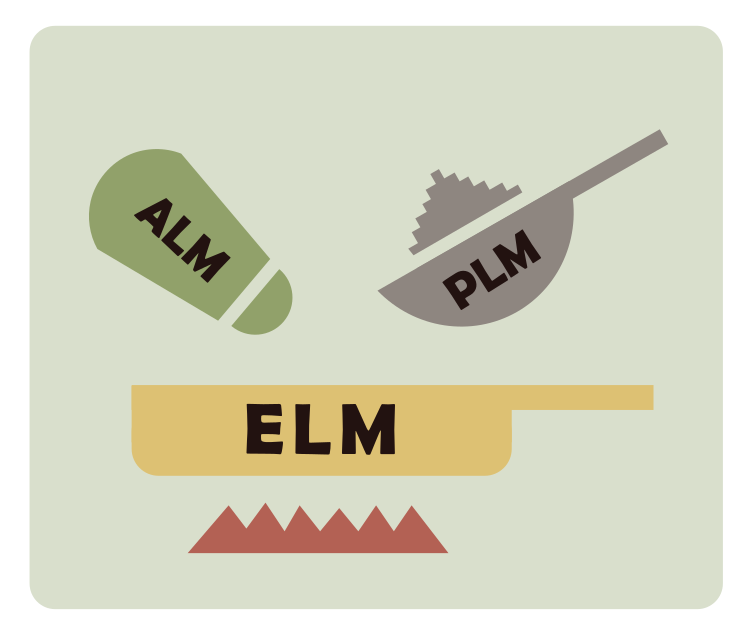What is ALM?: Everything You Need to Know
Critical for delivering a quality product to your users, application lifecycle management is necessary for all software developers and stakeholders to understand. In this guide, we’ll cover what the process is, what it involves, its importance in modern software development, and more.
What Does ALM Mean?
ALM, which stands for Application Lifecycle Management, is the specification, design, development, and testing of a software application through a system of people, tools, and processes. ALM covers the entire lifecycle from idea conception and initial planning, through development and testing, on to deployment and support, and ultimately to the retirement of the application.
Because ALM involves such a wide range of variables, processes, people, purposes, and more, dedicated tools are typically used to ensure that everything maintains organization, compliance, and communication between teams.
Why is ALM So Important Now?
A lot has changed since the Agile Manifesto was published and before organizations realized that their previous waterfall approach to software development was inefficient and prone to scope creep, cost overruns, and missed deadlines. Before this shift, each of the disciplines that made up the overall software process was completely separate.
Once developers realized how much more efficient they can be with integrated teams that collaboratively define the requirements, plan releases and sprints, test the product during development, and deploy the latest update in a seamless way, the old separate processes didn’t make sense. ALM is basically the melding of the disciplines concerned with all aspects of the software delivery process:
ALM vs. DevOps
ALM and DevOps are two approaches in software development with similar goals but different focuses. Despite it still being relatively new, ALM is a more traditional approach that focuses on the entire application lifecycle, from conception to retirement. It uses processes, tools, and technologies to manage requirements, design, development, testing, deployment, and operations.
DevOps, on the other hand, is an updated, more modern approach that combines software development (Dev) and IT operations (Ops) to shorten the systems development life cycle and provide continuous delivery of high-quality software. It focuses on the automation of processes and the integration of teams across the entire application lifecycle.
For example, an organization that is looking to improve the quality and efficiency of its software development process may be well-suited for ALM. An organization that is looking to shorten its software delivery cycle and improve the agility of its development teams may be better suited for DevOps.
Application Lifecycle Management Stages
ALM is really an umbrella term that covers different disciplines that traditionally were considered separate. These include project management, requirements management, development, testing and quality assurance (QA) as well as customer support and IT service delivery:
In essence, ALM tools provide a standardized environment for communication and collaboration between software development teams and related departments, such as test and operations. They also automate the process of software development and delivery.
While the specifics can change from project to project, the general stages that ALM follows are:
- Requirement management - the first stage of the process, this involves laying out everything that is needed from the application. Requirements gathering can include factors such as governance or compliance requirements, business needs, user interface features, and more. Organizing these requirements often uses a hierarchical tree structure that starts with the most general needs at the top and gets more specific as you move down the chart.
- Estimation and planning - before the team can start actually working on the project, it’s important to determine how long tasks will likely take, and what groups will handle each. For the best results and most accurate view, representatives from all related teams are typically present to provide input.
- Development of software - once requirements are agreed upon and there is a plan for who is doing what (and for how long), development on the application can begin. This can follow a number of different methodologies, which can range from sequential steps to concurrent and agile processes (which we discuss more here).
- Testing and QA - while this can have some overlap with the development stage depending on the methodology used, quality assurance and testing are crucial to ALM and delivering a good product. Testers will evaluate how the application meets the requirements set out in the first stage, as well as other stakeholder expectations around performance, security, integrations, and more.
- Deployment - finally, the software is released to users, and this is another process that will vary from project to project and organization to organization. The deployment plan also depends on the type of application, such as whether it will be accessed over the web or if it needs to be installed on a company’s onsite servers.
- Ongoing support and maintenance - unfortunately one of the most overlooked stages of ALM, software needs to be able to adapt to customer feedback, ongoing issues, and upgrades. Because it can sometimes be indefinite, this stage is also usually the longest of the cycle, but ensures the quality and longevity of your product.
For more information on each of these stages and how ALM tools can help, see our resource on the Key Components of Application Lifecycle Management.
ALM vs. SDLC
ALM can sometimes be confused with SDLC, or software development lifecycle. While they’re similar, Application Lifecycle Management refers to the entire lifecycle of an application, while SDLC focuses only on the development stage that we discussed above. In essence, SDLC can be considered a section of the ALM process, but doesn’t include requirements gathering, planning, maintenance, etc.
What About Product Lifecycle Management (PLM)?
In the manufacturing industry, product lifecycle management (PLM) is the process of managing the entire lifecycle of a product from inception, through engineering design and manufacture, to service and disposal of manufactured products. Traditionally this has been a separate process to ALM, with hardware and physical systems using standalone PLM systems to manage their lifecycles, and the software components using a separate ALM solution or suite of ALM tools.
What Should I Look for in an ALM Tool?
When considering different application lifecycle management platforms and suites, you should look for systems that can provide the following key features:
- Develop requirements and user stories, then decompose into detailed tasks for resource tracking
- Prioritize and schedule requirements for each release/iteration
- Assign requirements, tasks, and incidents using Agile planning board
- Track bugs, enhancements, risks, and issues linked to changes in your source code repository
- Map tests to requirements to track coverage
- Create and assign test sets for test execution management
- Record bugs linked to test steps for full test traceability
- Manage manual and automated testing
- Personalized dashboards and customizable reporting
- Ability to attach documents, screenshots, and URLs to all artifacts
- Full audit history of all changes made in the system
- Customizable graphs and reports in multiple formats (HTML, MS-Office, and Adobe Acrobat).
> See our list of the best ALM tools (and their strengths and weaknesses) here.
What is the Future of ALM?
We are seeing a convergence happening in the Application Lifecycle Management (ALM) and Product Lifecycle Management (PLM) markets. Traditionally, companies that created hardware devices were concerned with the components, assemblies, and parts that comprise their products. On the other hand, companies that develop software were concerned with requirements, use cases, tests, bugs, issues, and source code. However, as the lines between software and hardware products increasingly blur (is a smartphone hardware or software? What about an internet-connected industrial sensor?) and Agile development means that the hardware and software cannot be developed independently, the tools used to manage these two product categories need to become more integrated.
In parallel to what happened with ERP, the standard business line functions of HR, Finance, and other enterprise functions are also becoming intertwined with ALM / PLM systems. The timesheets entered by a developer to mark the time spent fixing a bug or implementing a feature may need to be billed to a client, or used to determine that quarter's hiring needs.
We believe that in the future, customers will be using Enterprise Lifecycle Management (ELM) solutions. These will contain elements of ALM, PLM, and will either integrate with ERP systems, or even include such functions.
Why Choose SpiraTeam as Your ALM Tool?
When managing your software projects, do you find yourself juggling between requirements documents, bug-tracking tools, project plans, and test reports to make sure that your project is on schedule? Are you tired of having to manually 'glue' together a patchwork of tools and systems from different vendors?
SpiraTeam is the premier ALM system that manages your requirements, releases, tests, issues, and tasks in one integrated environment. SpiraTeam also provides integrated dashboards of project health and status information, as well as key project quality and progress indicators. These include requirements test coverage, task progress, project velocity, test execution, and top risk and issues – in one consolidated view that is tailor-made for agile methodologies, as well as supporting your legacy/hybrid waterfall projects.
- SpiraTeam is a complete solution that includes requirements management, test case management, release planning, iteration planning, task estimation, and defect tracking all fully integrated from day one.
- It’s also a highly intuitive web application that provides a complete picture of a project’s status and health, yet only requires a web browser.
- SpiraTeam is methodology agnostic and can be used equally web for any agile methodology – including Scrum, AUP, XP, or DSDM
- You have the ability to leverage your existing technology investments by integrating with existing automated testing solutions, software configuration management (SCM), and third-party defect-management systems.
- We provide superb technical support that ensures that inquiries and questions are dealt with in a timely and professional manner.
To learn more about SpiraTeam and how it can improve your application lifecycle management, please:







